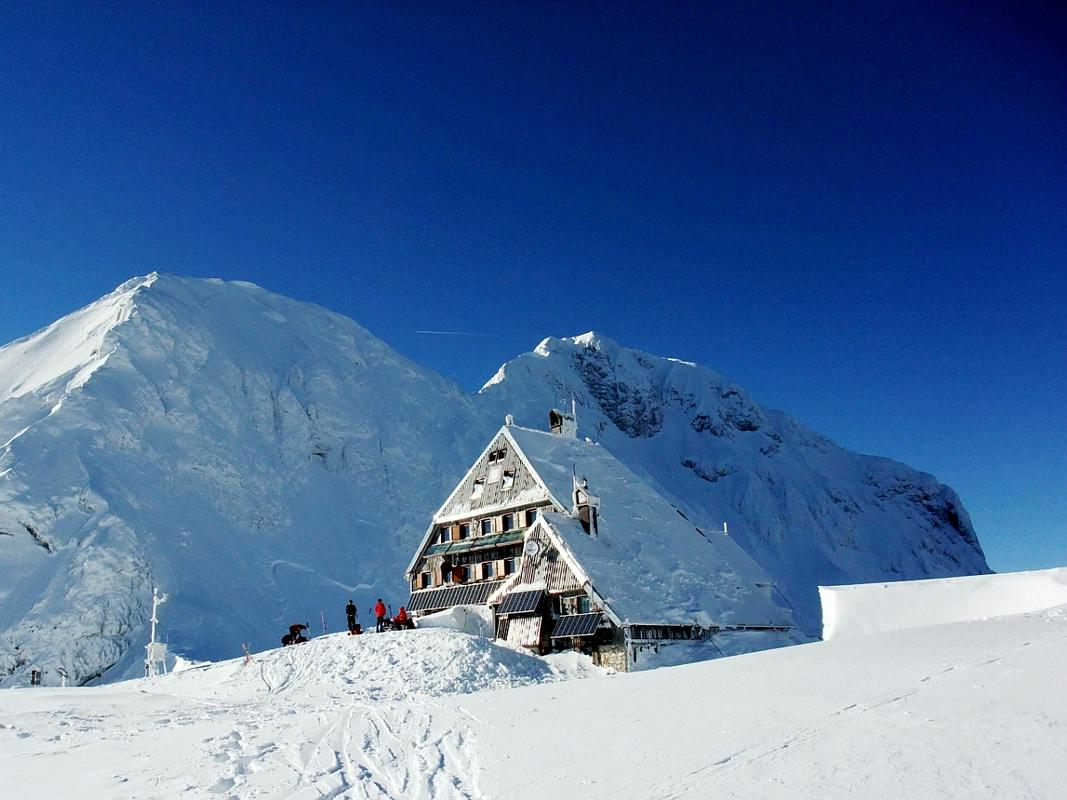
At an altitude of 2864 meters (9396 feet), Triglav towers above Slovenia both physically and symbolically. As the country’s highest mountain, it’s a beloved national symbol and a popular destination for hikers and mountaineers of all ages. Most of those who plan to climb Triglav – a feat often considered the duty of every Slovenian – spend a night at Kredarica, a mountain hut on a saddle just below the imposing summit.
The history of the Kredarica Hut dates back to 1896, when the first building was built on the initiative of Jakob Aljaž, a local priest, a nature lover, and a committed mountaineer. The building soon underwent the first of several expansions, and by the eerily 20th century, it included ten rooms as well as a kitchen. The most recent renovation, in 1983, turned the Kredarica Hut into a veritable high-altitude hotel. It now boasts 140 classic beds, 160 bunk beds, and even a plasma TV. Its power is generated by solar cells and a wind turbine.
Adjoining the hut is a small Catholic chapel. The first chapel on the spot was also built by Jakob Aljaž at the same time as the hut, but it was destroyed by unknown attackers in 1952, at the height of anti-religious sentiment in Yugoslavia. Political circumstances ruled out its reconstruction until the fading days of Communism, and its replacement wasn’t inaugurated until 1992, a year after Slovenia became independent.
Since 1954, Kredarica has also hosted an important weather station. Meteorologists spend 14-day shifts on Triglav, tracking conditions that are then reported by radio stations alongside Slovenia’s towns and cities. Among other duties, they measure the ever-declining extent of the Triglav Glacier – an important indicator of how climate change is affecting Slovenia’s environment.
While the summers are often pleasant and lively, winters tend to bring extreme conditions to Triglav; high winds and bitter cold are the norm. The loneliness of the meteorologists is broken only by visits from rare winter hikers – brave souls who brave the snow and the cold to summit the mountain at that time of the year. Because the hut is officially closed and unstaffed throughout the winter season, the meteorologists even prepare meals for their wintertime visitors.
Supplies were once brought to the remote hut on horseback from the surrounding valleys. Nowadays, regular helicopter flights bring in the goods that make life on the roof of Slovenia, high above the tree line, more comfortable than ever before.

































































